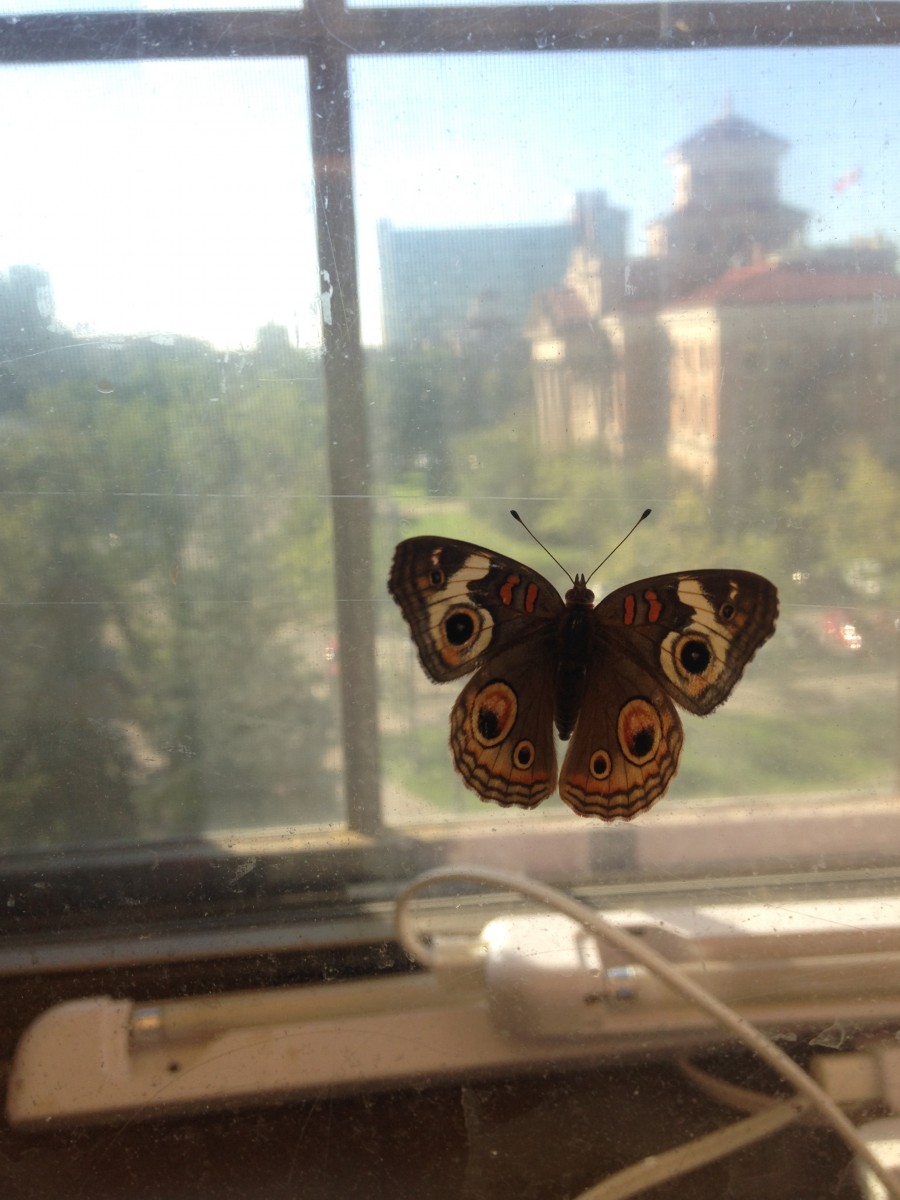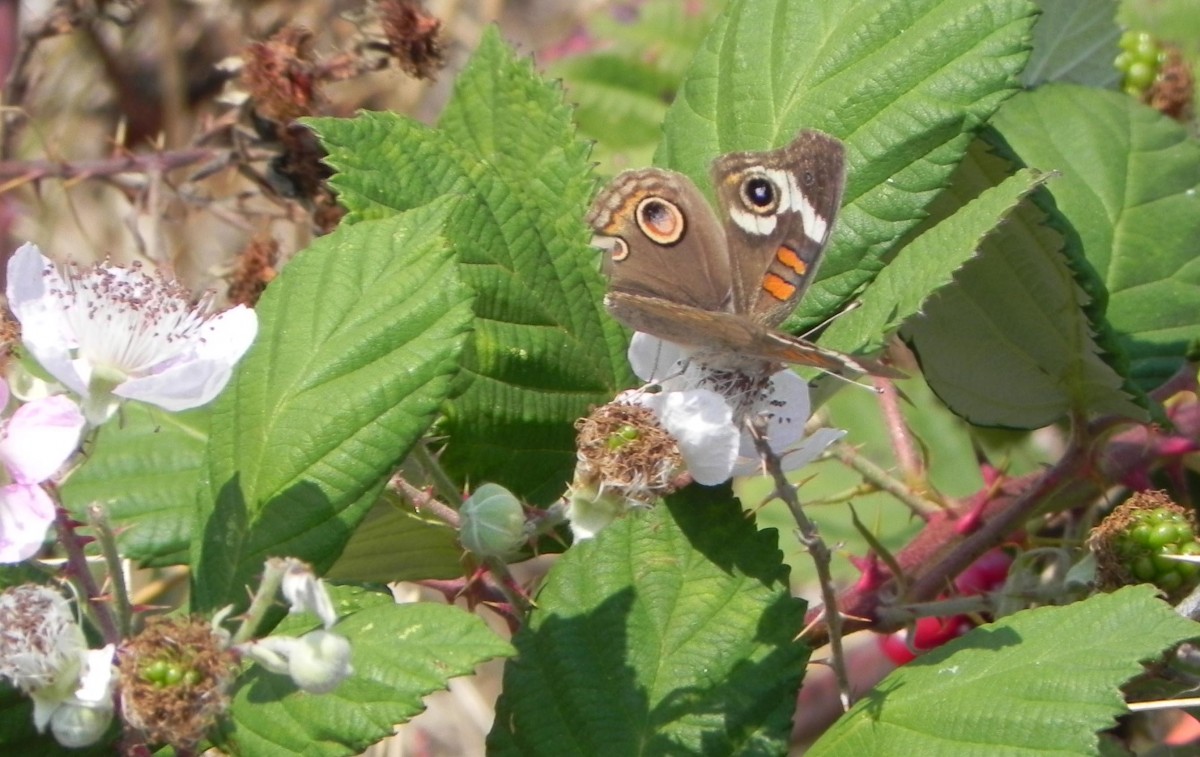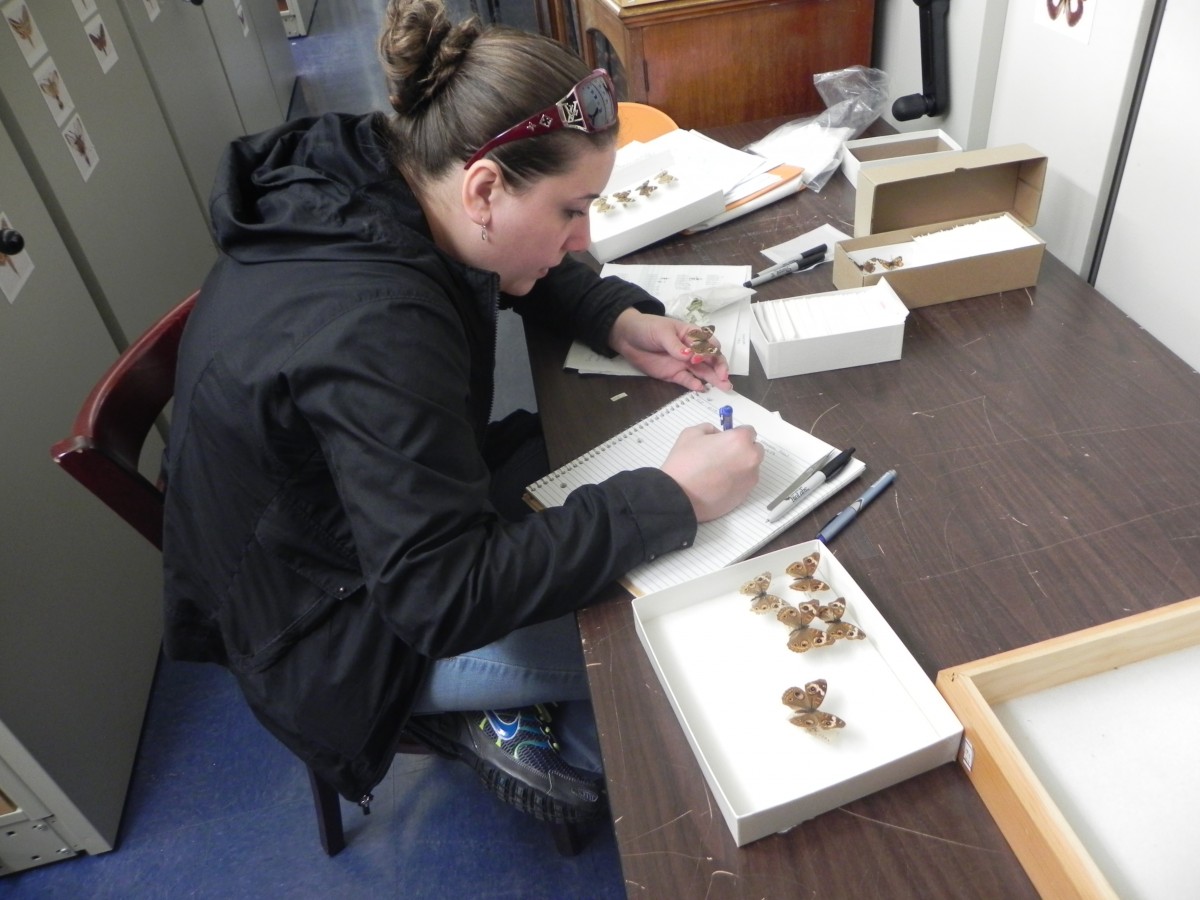
U of M entomologist Dr. Jeffrey Marcus is outstanding in his field.
Net gain: First new butterfly species identified since 2016
The “Stanley Cup of entomology” has been won by a U of M biologist.

The great buckeye butterfly was first identified by U of M researchers
The grey buckeye butterfly is dark brown, speckled, and somewhat mothlike, but it’s actually a beautiful new species — the first new one identified in North America since 2016. And it’s the first new one found in California for decades.
University of Manitoba entomologist Dr. Jeffrey Marcus and his graduate student Melanie Lalonde identified the grey buckeye butterfly (Junonia grisea) while studying variations in wing patterns of buckeye butterflies from across the entire Western Hemisphere.
Marcus explains: “Naming a new butterfly species from North America is very uncommon these days because so many researchers have studied the butterflies of this region for a very long time.”
He adds: “When a new one is named, it is either because it is rare and found only in an obscure place, or because it looks very similar to another species and the two were lumped together under one name. This was a ‘lumping situation.’”
In fact, identifying a new species is so rare, it’s like winning the Stanley Cup of entomology, sort of.
Marcus muses: “Including the grey buckeye, there have only been six new species of butterflies described from North America (north of Mexico) since the year 2000, so that’s about one new species every three years. Since someone wins the Stanley Cup every year, maybe that’s like winning three Stanley Cups.”

The grey buckeye butterfly in its natural habitat
Marcus and Lalonde collected some specimens in California, though many others were examined in museum collections, ranging from the Wallis Roughley Museum of Entomology at the U of M to the California Academy of Sciences in California, the Smithsonian in Washington, DC, and the McGuire Center for Lepidoptera and Biodiversity in Florida.
It had long been thought that grisea was simply a member of a known species, Junonia coenia, but through their examination of its physical appearance, life traits, and DNA markers, the Manitoba entomological detectives realized the butterflies were two distinct species.
Marcus says: “The grey buckeye is abundant in California and with its wings closed it’s about the size of a toonie, so people definitely saw it, but almost everyone just thought they were seeing the same kind of buckeye butterfly that is common in the Eastern USA.”
The eyespots on the wings of Junonia grisea are as “bullseyes” to attract the attention of visual predators like birds out towards the periphery of its wings and away from the head and body.
“When a bird pecks at these bullseyes, it can cause minor damage to the wing, but the butterfly can usually fly away to live another day,” says Lalonde.
Marcus developed expertise in buckeye butterflies starting in 1996 when he was a PhD student in North Carolina, where these butterflies are common, bringing that expertise with him when he moved to Manitoba in 2009.
He explains: “My students and I continue to work with them because we know the group really well, even though it is slightly less convenient since they are not native here. We do projects involving local Manitoba butterflies, too, but we haven’t found any new species here yet.”
Butterflies are Marcus’ prime interest because studying them allows a combination of fieldwork and natural history with lab work. He says: “Some days I think about what is happened at the cellular and sub-cellular levels, while other days I’m working to answer questions at the level of entire ecosystems.”
Lalonde’s research is focused on the fluttering creatures because she considers them beautiful and highly diverse insects. She says: “They can be found nearly everywhere in the world and in many shapes and colours, something that is quite fascinating to me.”

Grad student Melanie Lalonde is fascinated by lepidoptera
Research at the University of Manitoba is partially supported by funding from the Government of Canada Research Support Fund.






